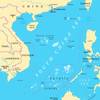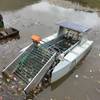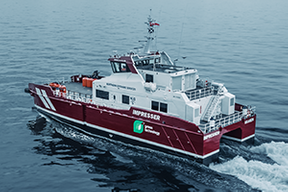P&I Claims Increase for Bagged Rice Shipments
According to estimates, of the nearly 475m metric tons of rice produced globally in 2013, the largest producers were China (30% of the total) and India (22%). However, most of the rice produced in these countries is consumed domestically. By contrast, the largest exporters of rice since 2008 have been Thailand, Vietnam, India and the US (at just under 10%). Overall, it is reckoned that only 5-6% of global rice production is transported internationally. Nevertheless, even this figure represents a significant volume of global trade.
In its latest loss prevention initiative, the American Club has published Transport Guidance for Bagged Rice, running to 70 pages, supplemented on the club’s website by animations and photographs by IDESS IT, Subic Bay, which works closely with the club on loss prevention matters.
Early editions of Lloyd’s Survey Handbook (circa 1950s) noted that rice, especially new crops, is liable to heat and sweat, with consequent loss in weight, also being susceptible to taint, and liable to damage by moisture due to improper ventilation.
The American Club’s new publication points out that, traditionally, rice was carried as break-bulk cargo on general cargo vessels, where the use of permanent wooden dunnage was designed to ensure proper ventilation. More recently, of course, we have seen containerized cargoes of rice.
As global demand for food has risen, most rice shipments are now made in bagged form on board traditional bulkers, which is the primary focus of this guidance.
Cargo claims have comprised, on average, about 25% of the American Club’s total exposure. Within this category, bagged rice claims in regions such as West Africa have topped the list of cargo claims met by the club’s members. While the club has pioneered innovative actions such as the use of the anti-suit injunction mechanism to significantly reduce and thwart the ability of cargo interests to present fictitious and exaggerated claims involving bagged rice and other cargoes, preventative measures are still the most useful tools against these potential exposures.
Transport Guidance for Bagged Rice draws upon the knowledge and experience which the club has accumulated from its own claims, from those who are engaged in the operation and/or chartering of ships for the carriage of bagged rice, and from surveyors’ professional experience on behalf of P&I insurers, and from owners and charterers alike.
The publication has nine sections, with three appendices covering a list of definitions, a list of important documents to be kept and maintained, and a sample of a bill of lading.
american-club.com















